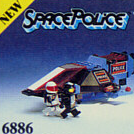
All-New TIE Fighter MOC
By
20feet, in LEGO Star Wars
-
Recently Browsing 0 members
No registered users viewing this page.

By
20feet, in LEGO Star Wars
No registered users viewing this page.